Hello all,
In the next few post I want to talk about the construction, outfitting, voyage, sinking, and discovery of the RMS Titanic.
I have been interested in the Titanic since I was pretty young, and have been following news on the RMS Titanic since the early 80’s, especially since its discovery in 1985 by Robert D. Ballard.
But let us begin by looking at the construction of the RMS (Royal Mail Ship) Titanic.
RMS Titanic, the construction.
The RMS Titanic (Yard number 401) was an Olympic Class vessel, designed by Harland and Wolff, and was part of a trio of Ocean liners to be built for the White Star line.
It had a length of 882 ft, a height of 175 ft, and was 92 ft wide. Its displacement was around 52,000 tons at a weight of around 46,000 gross tonnage.
It could reach a maximum speed of 28 mph (24 kn) and the cruising speed was 24 mph (21 kn).
There was room on board for around 2400 passengers and a crew of almost 900, but there was only room for 1,178 people in the 20 lifeboats.
In the original design there was enough room for everyone, but someone decided that all those lifeboats would clutter the deck, and experience of space, so they reduced the number of lifeboats.
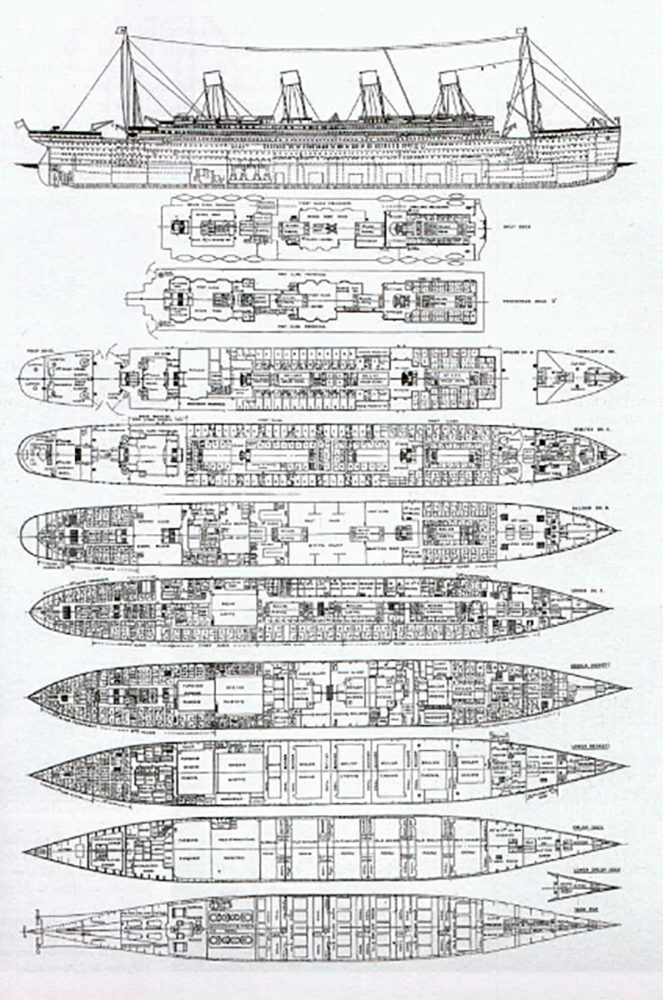
The design was approved on July 28th 1908, and construction started in 1909, when they laid the keel at the Harland and Wolff shipyard in Belfast, Ireland on march 31st.
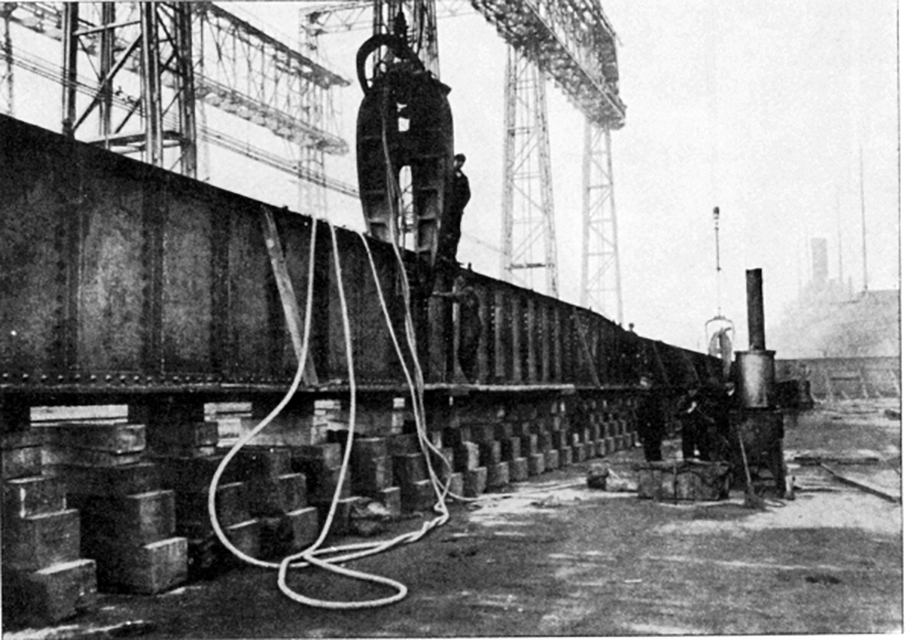
They had laid the keel of the Olympic, her sister ship, just 3 months prior on the slipway next to her. The images below are of the construction of the Olympic (Yard number 400), which was located on the right slipway looking towards the harbor.
There are not many photographs of the actual construction of the Titanic, so most images are from Olympic, but the images represent the undertaking of this giant construction.
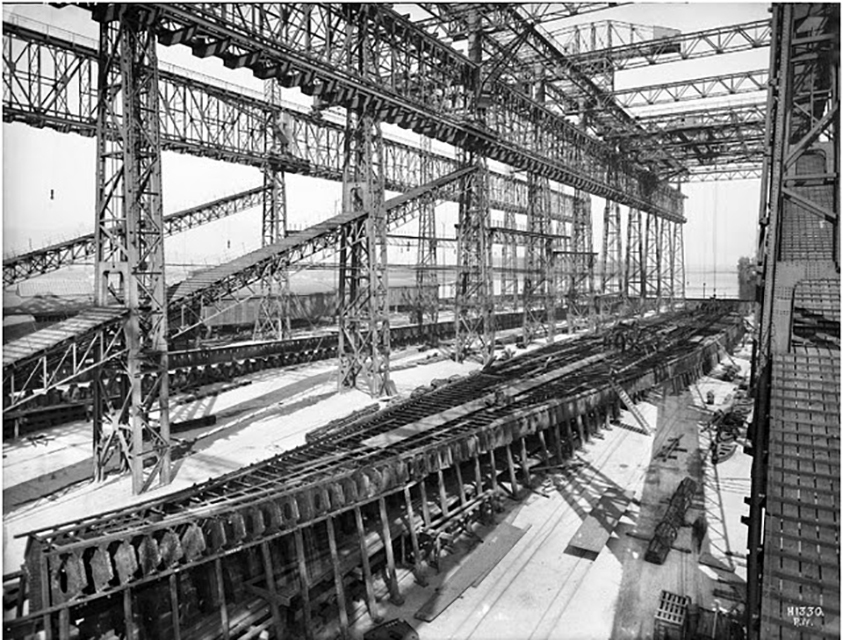
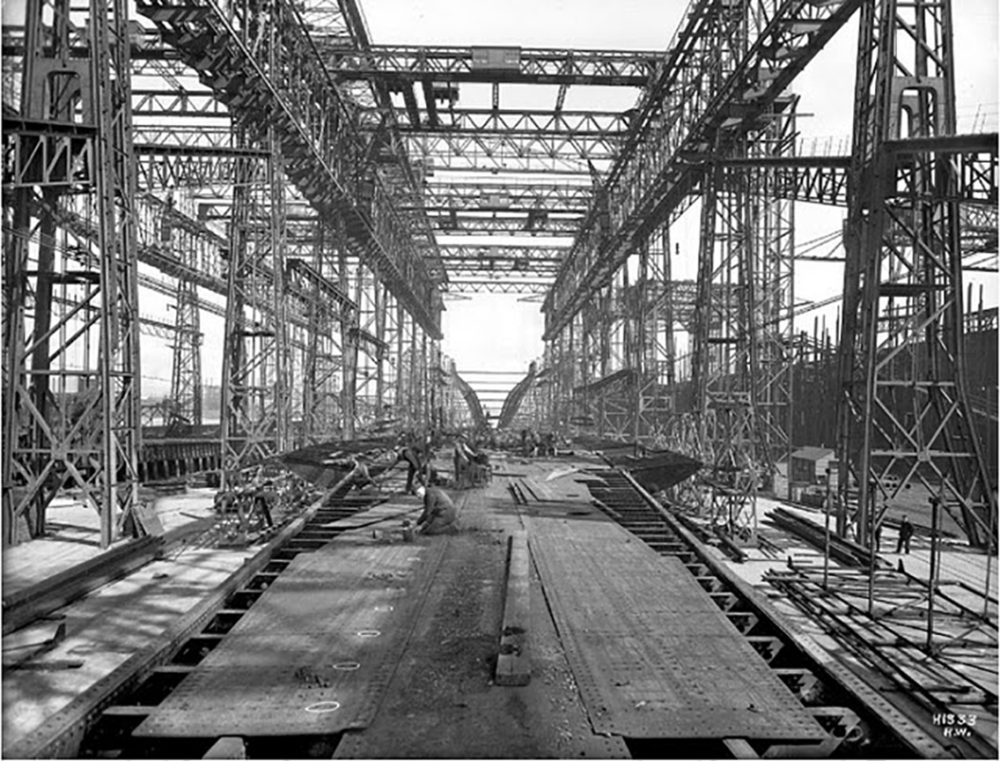
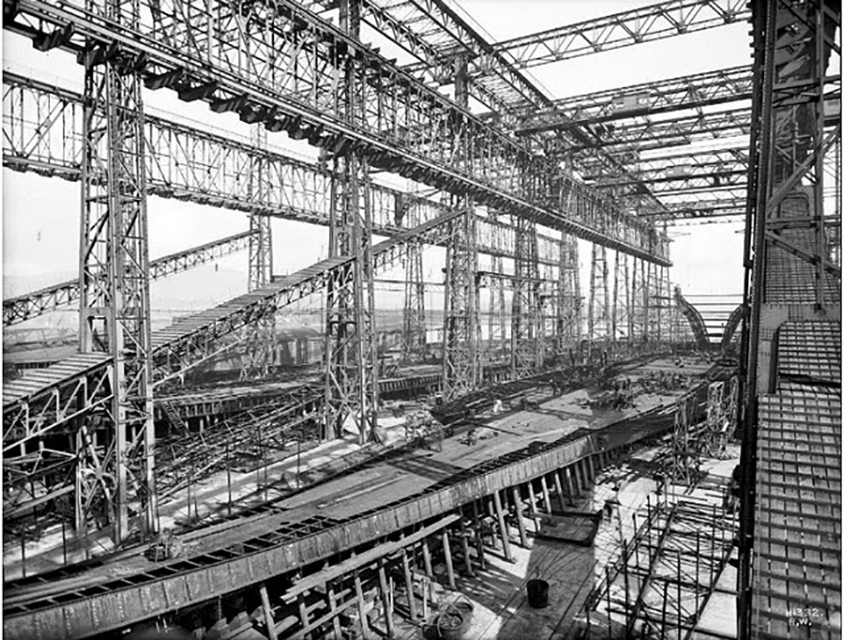
An estimated 3000 Irish workers, built the Titanic, and they finished the framing by April 1910.
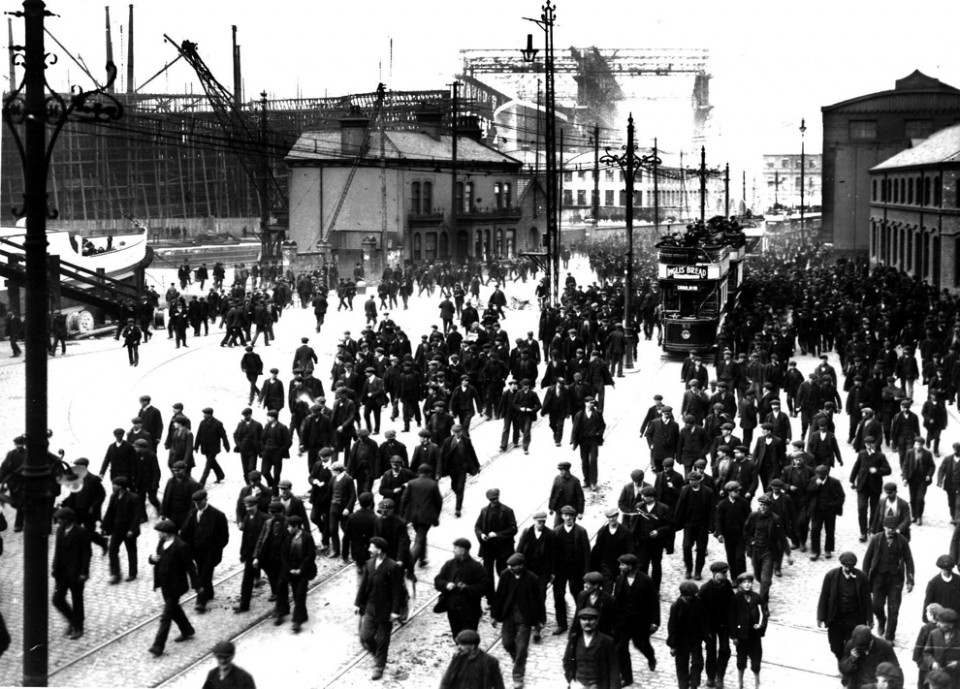
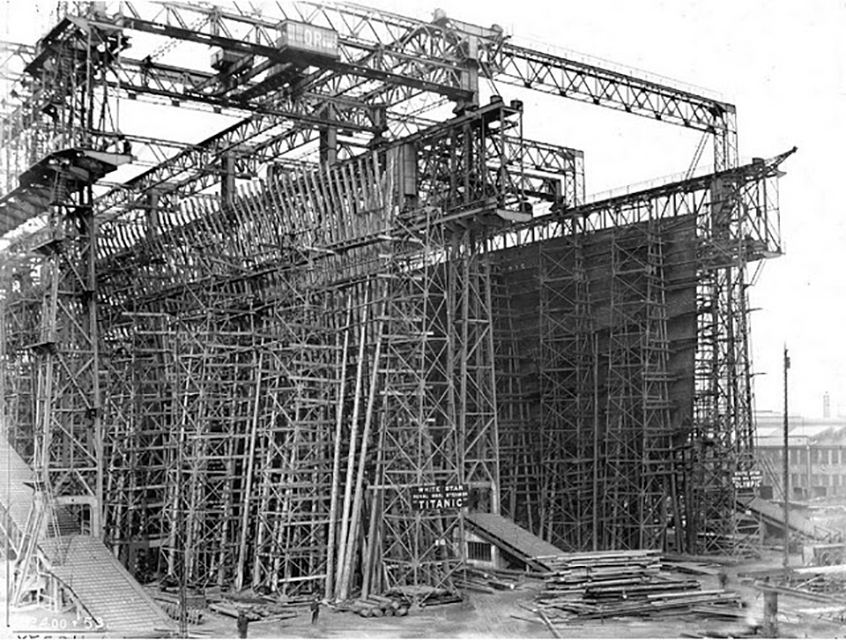
During the framing period, they also installed the 3 engines from the ship. They were too big to install afterwards.
The ship was powered by two four-cylinder, triple-expansion, inverted reciprocating steam engines, for the wing propellers. The 2 engines generated around 41,000 HP.
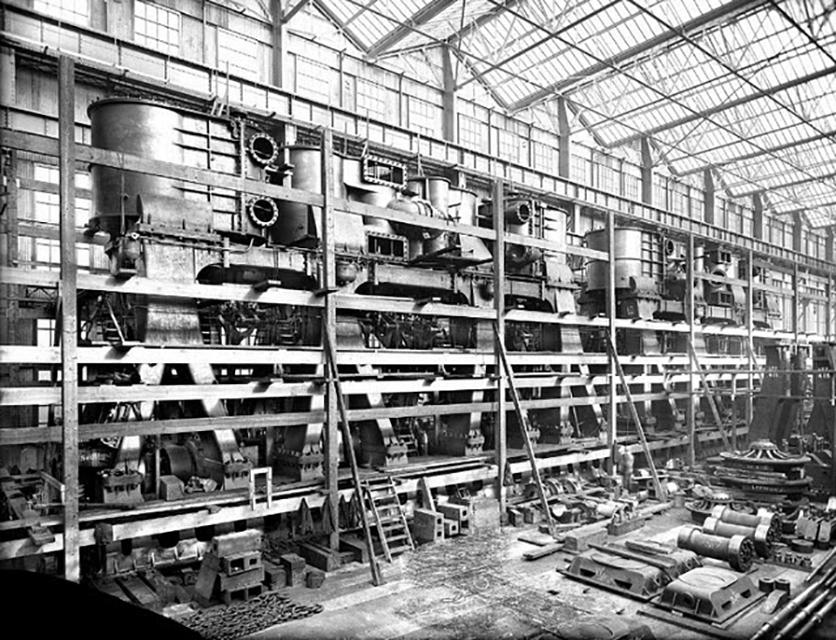
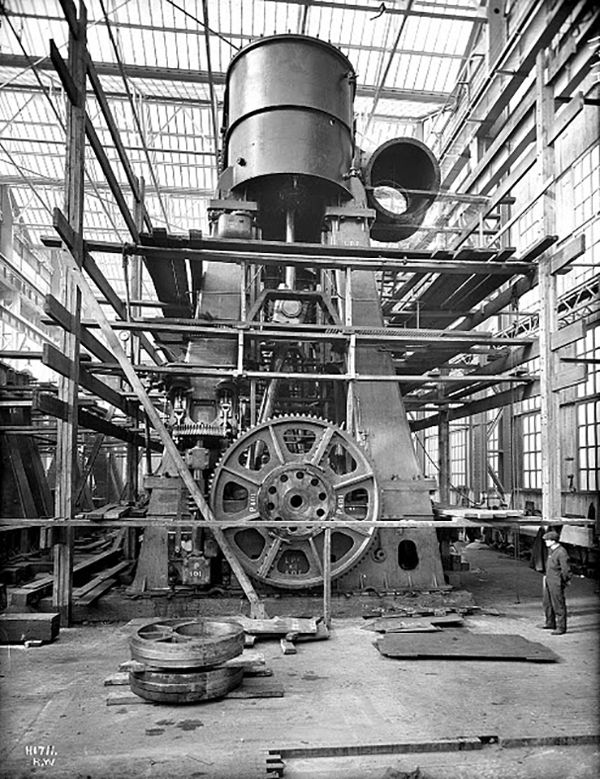
They also installed a low-pressure Parsons steam turbine, to power the center 4 blade propeller. This engine could generate 18,000 HP.
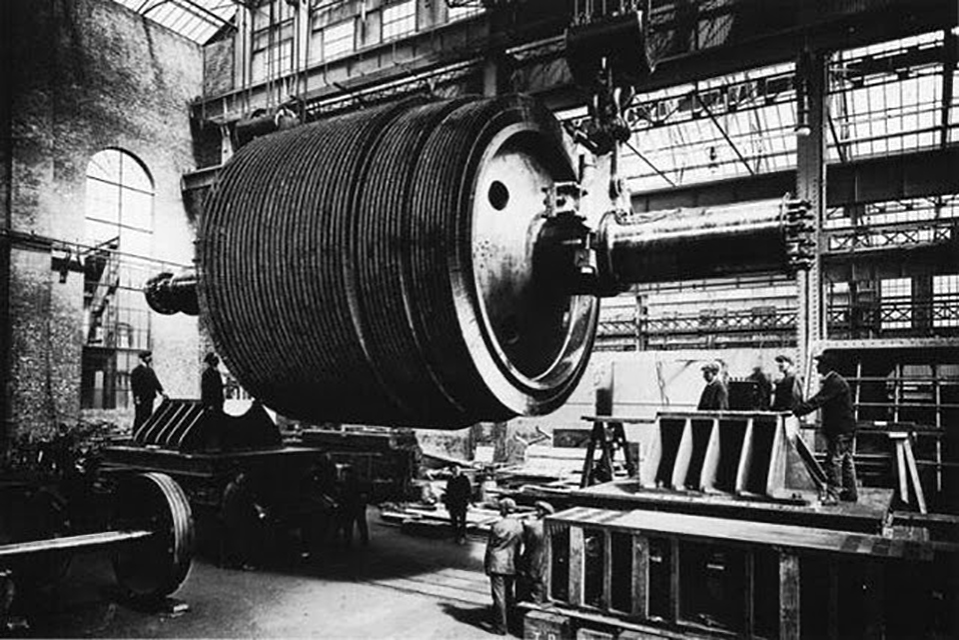
If you want to know more about the propulsion system of the Titanic, feel free to check out this site from Samuel Halpern, who gives a detailed explanation of Titanic’s power plant.
After the framing was done, they could start on the plating and decks of the ship.
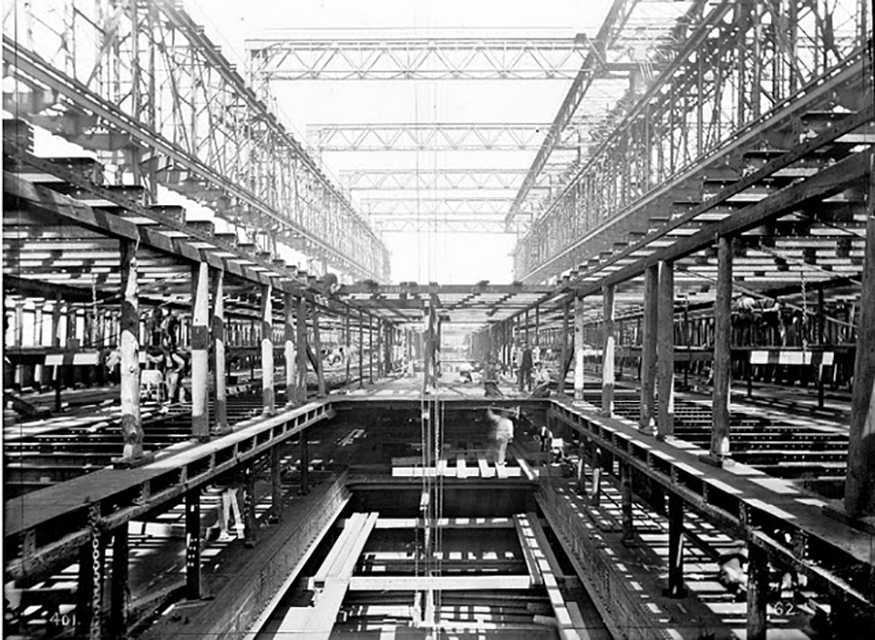
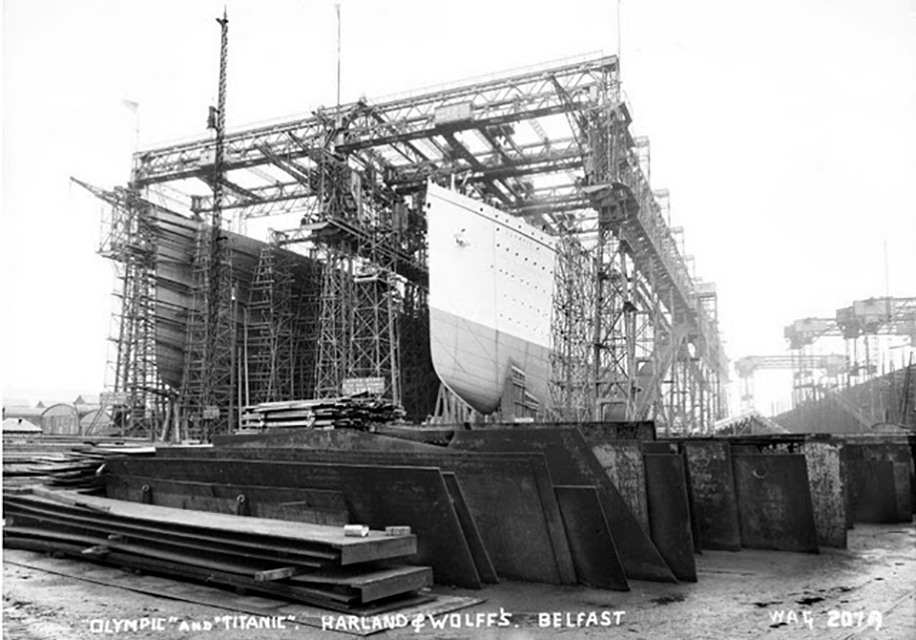
They finished the plating of the ship in October 1910, and they could work on the interior until she was ready for launch on May 31st 1911.
During that time, they also installed the propeller shafts. Notice the rudder fixation.
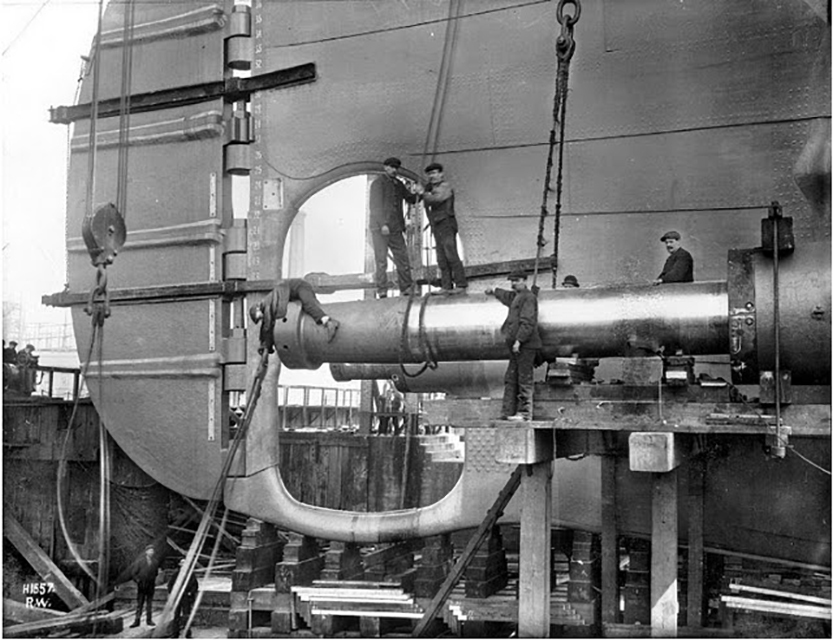
To make sure that the roughly 24.000 ton Titanic would be launched without a problem, the slipway was covered in 25 tons of soap and grease, and 2 large hydraulic rams at the bow of the ship, as can be seen in the image below, would start the launch itself.
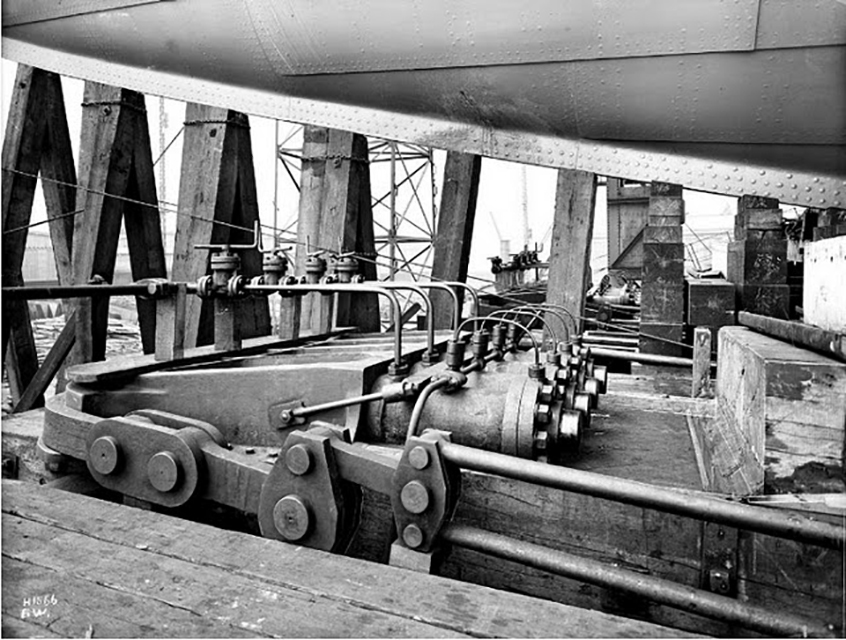
At exactly 12:15, after all the support post had been removed, she was launched and it took 62 seconds to clear the slipway, with a maximum launch speed of 12.5 knots.
In the image below you can see Titanic actually being launched. At this time, it was mostly just an empty hull. If you look closely, you can see the rudder fixation in place.
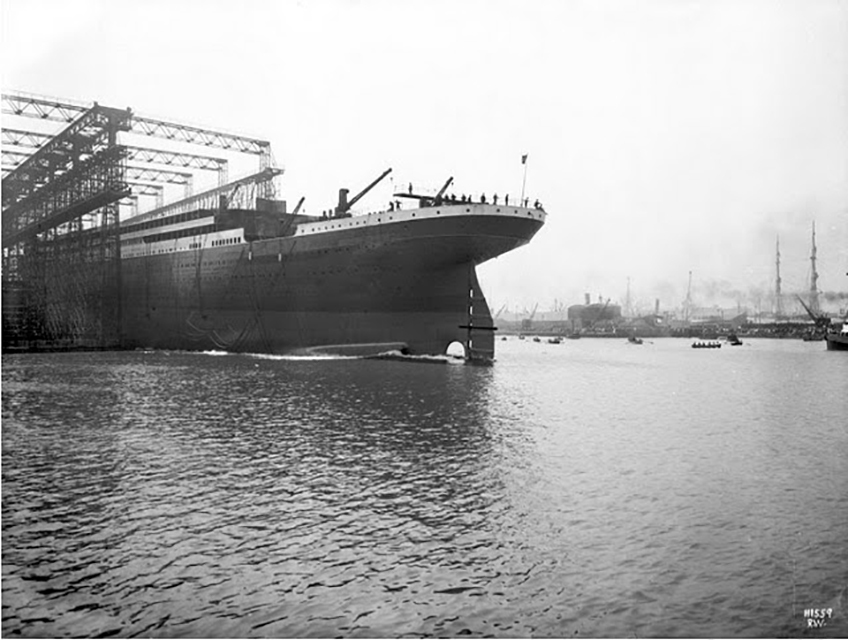
After launch, the ship was towed to the outfitting wharf, where she would spend the next few months getting ready for her maiden voyage.
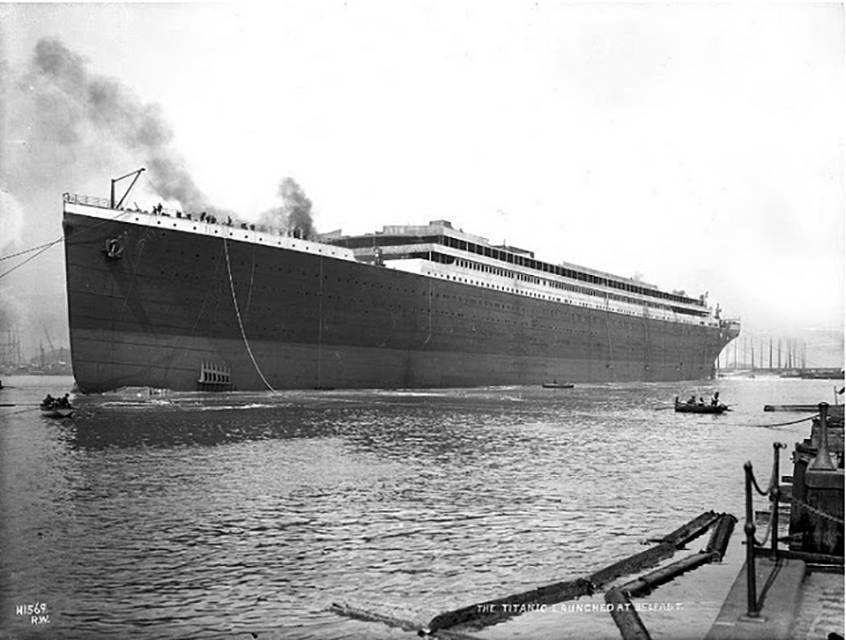
RMS Titanic, the outfitting.
At the wharf, they added the 4 funnels, from which 3 were actually working funnels, and 1 was a dummy funnel. They were hoisted into place with the 200 ton floating crane, which was bought by Harland and Wolff, to work on the big liners.
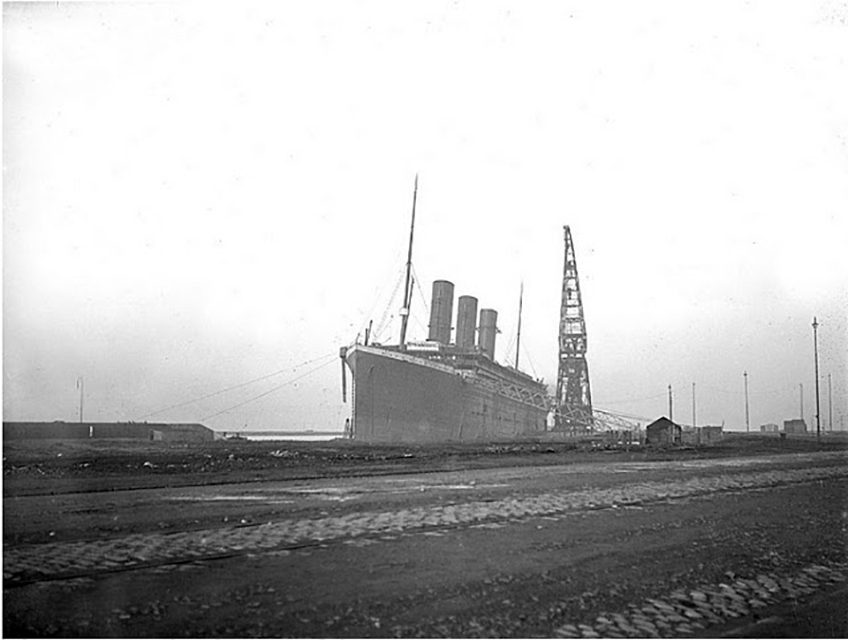
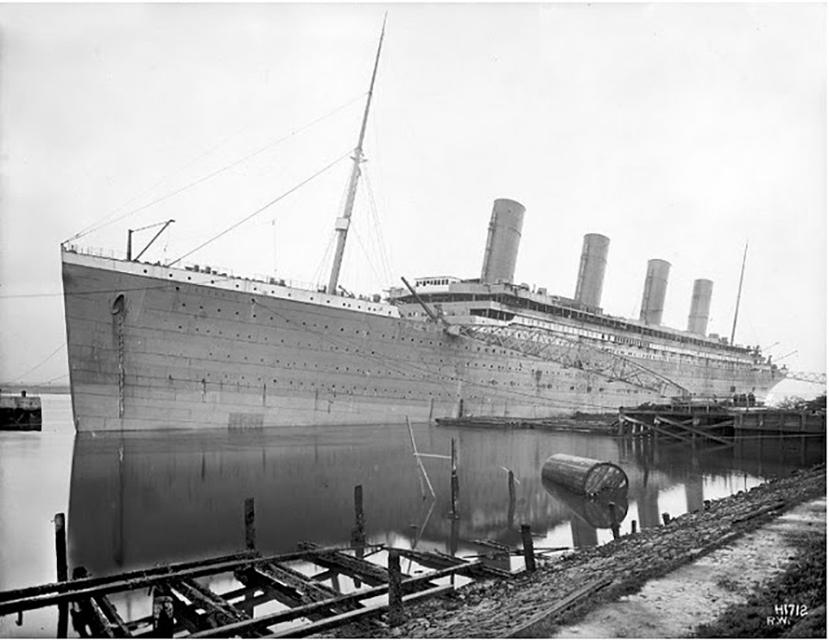
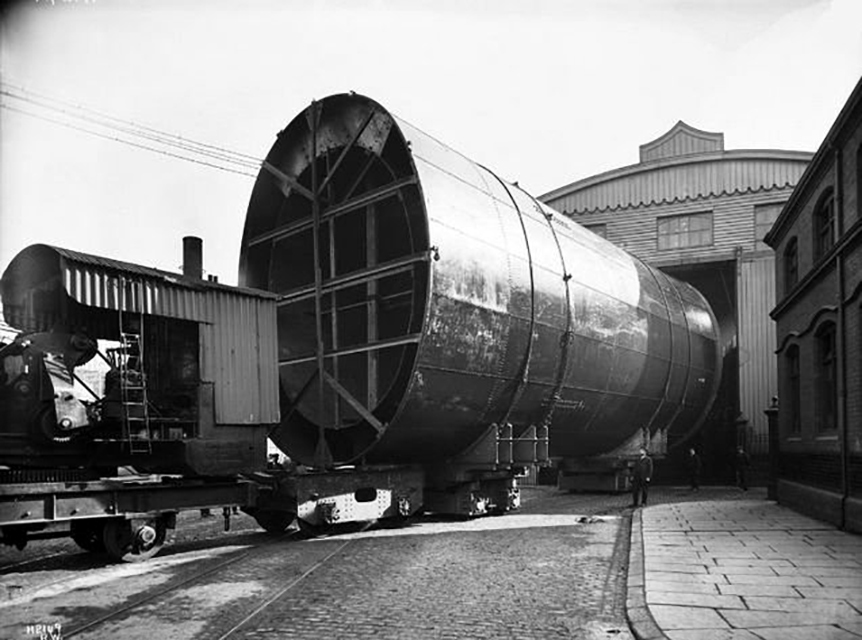
They also installed the 29 boilers that would power the engines of the ship. The boilers consisted of twenty-four double-ended and five single-ended ones. Some of the double ended boilers in the work shop at the yard can be seen in the image below.
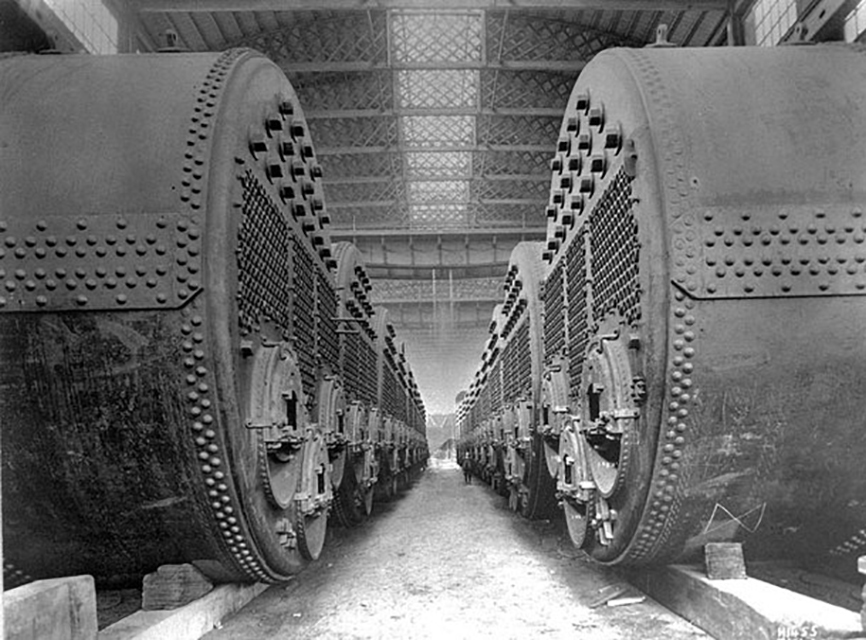
During her 8 month stay at the wharf, they also worked hard on the luxurious interior of the Titanic.
Below are several images of the interior of the Titanic and Olympic, which show how magnificent the interiors from these Ocean liners were.
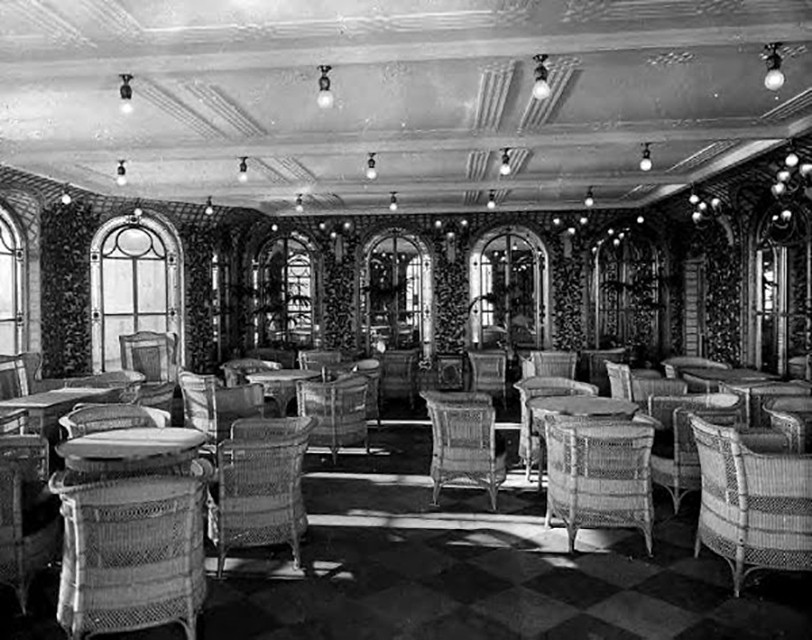
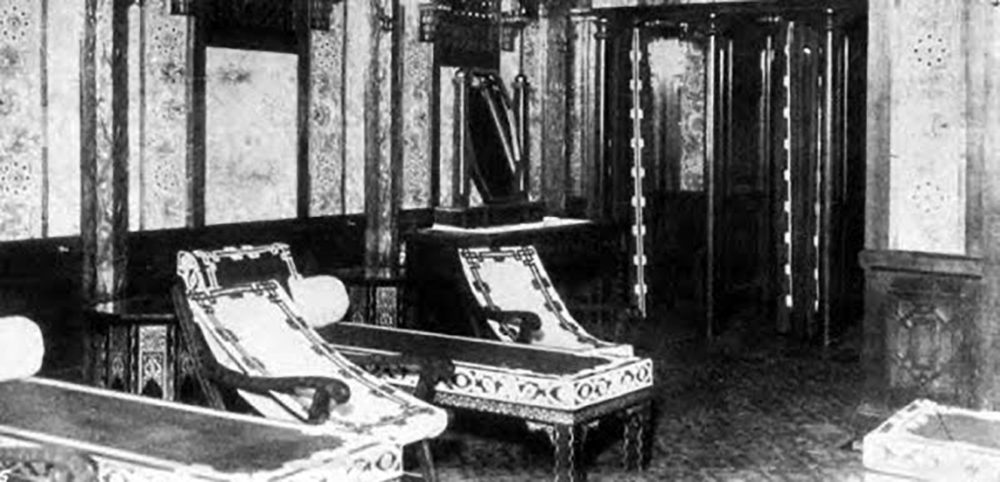
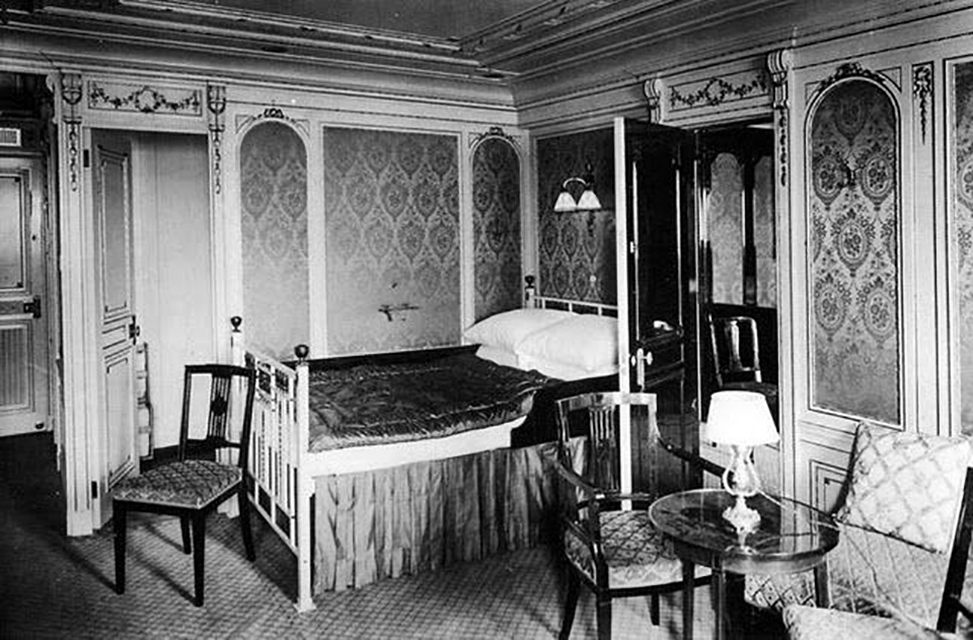
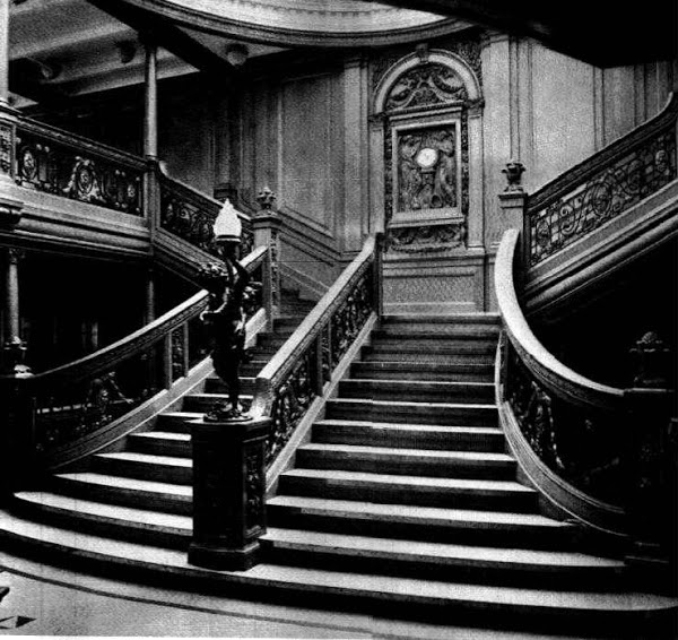
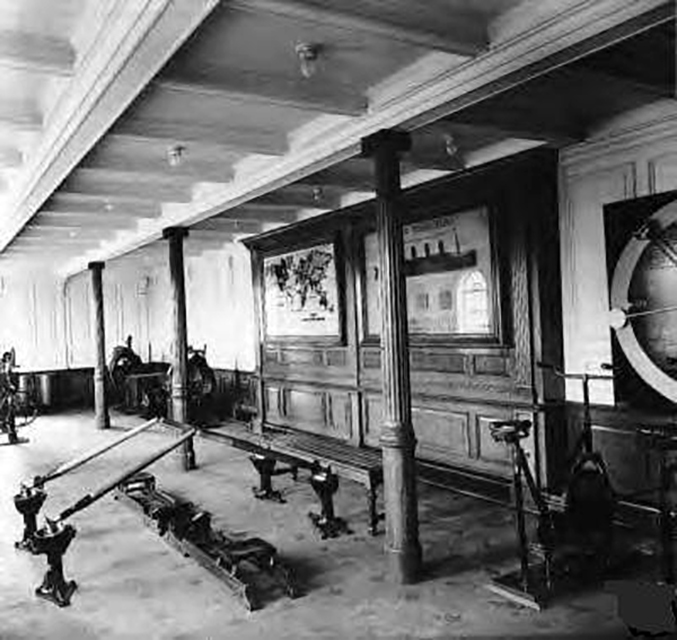
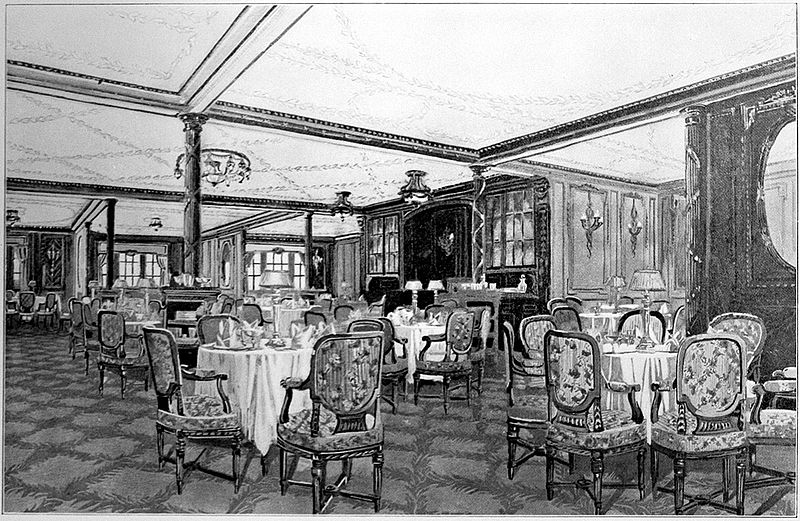

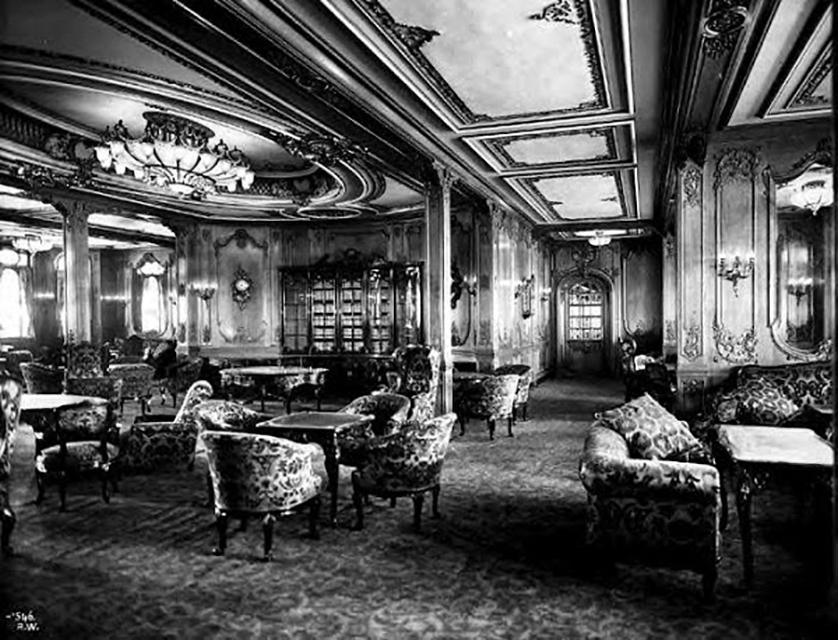
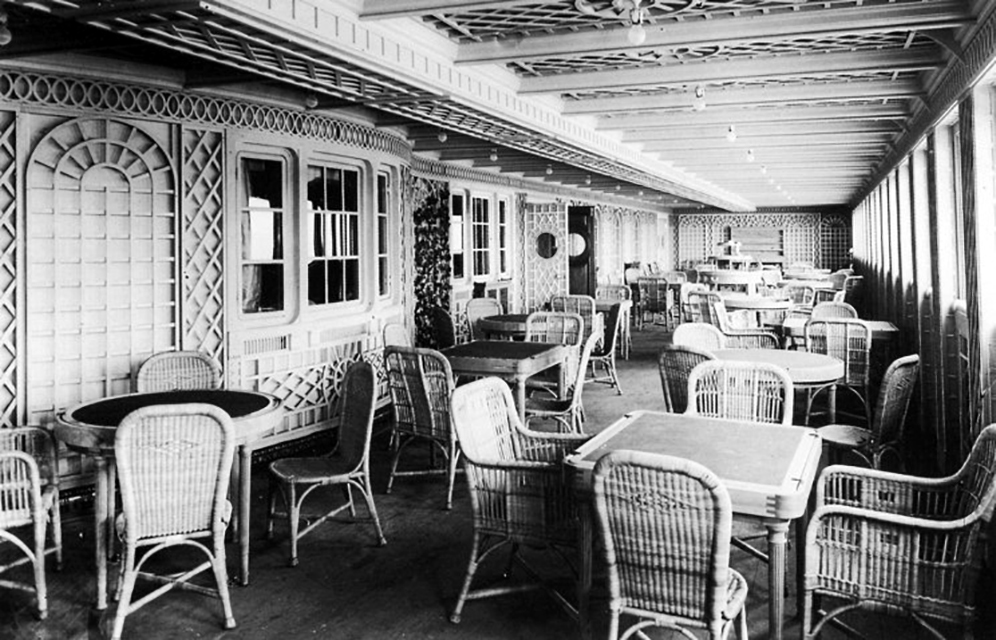
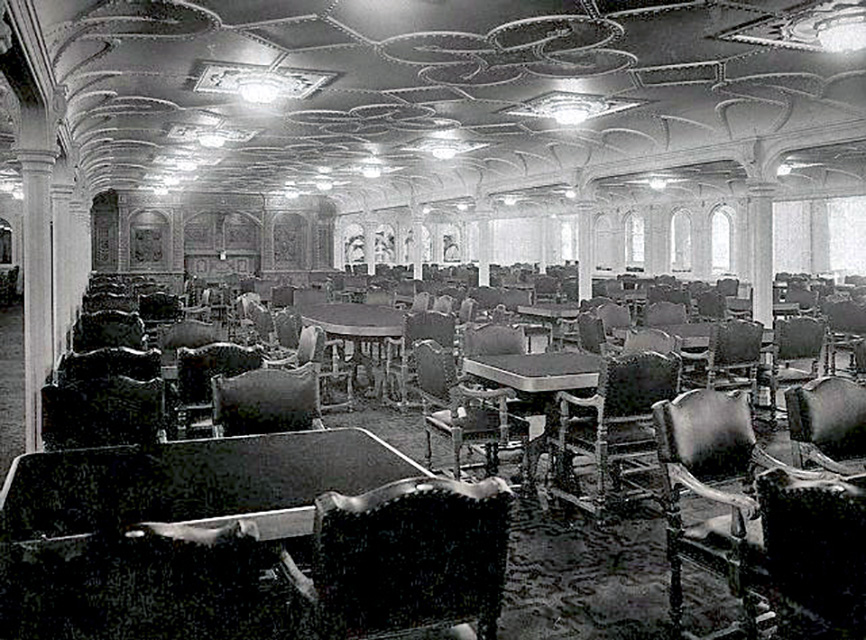
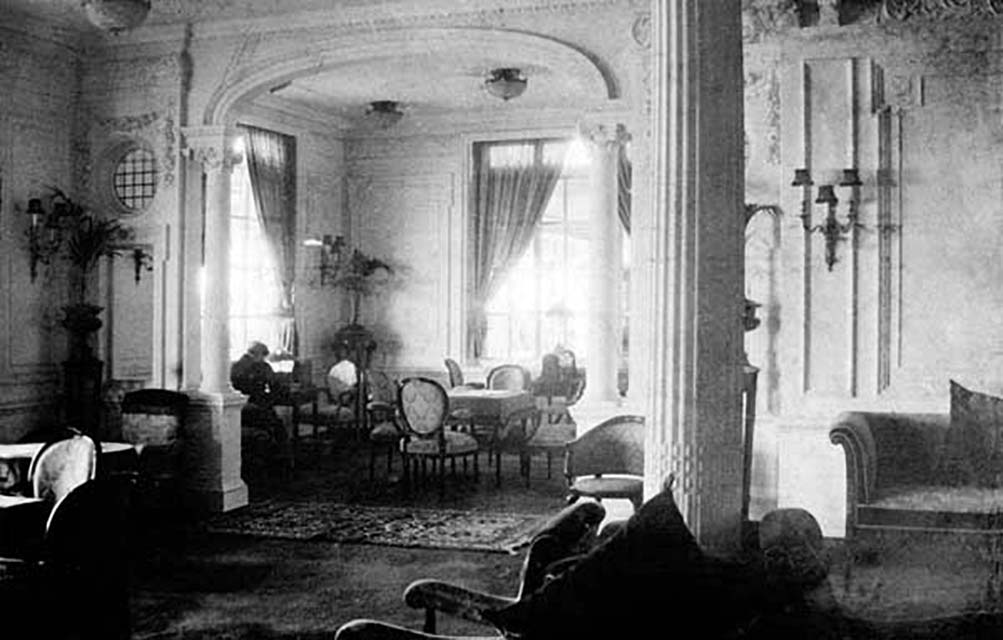
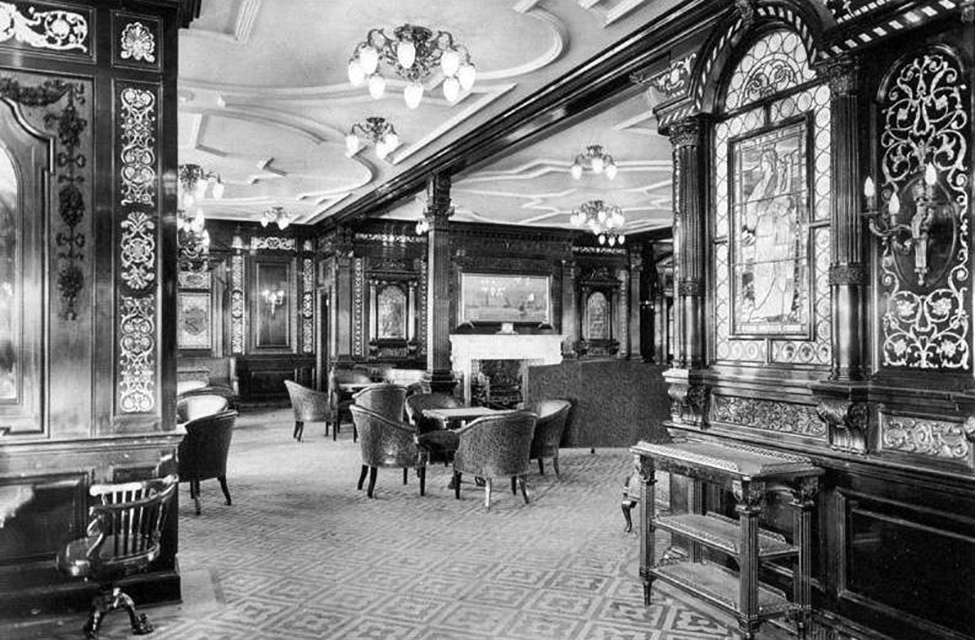
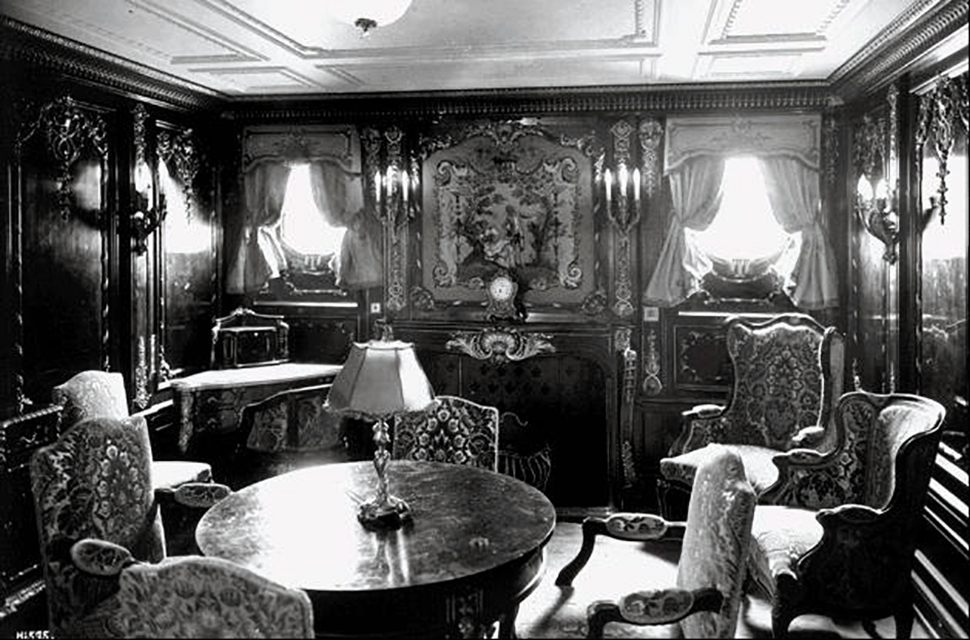
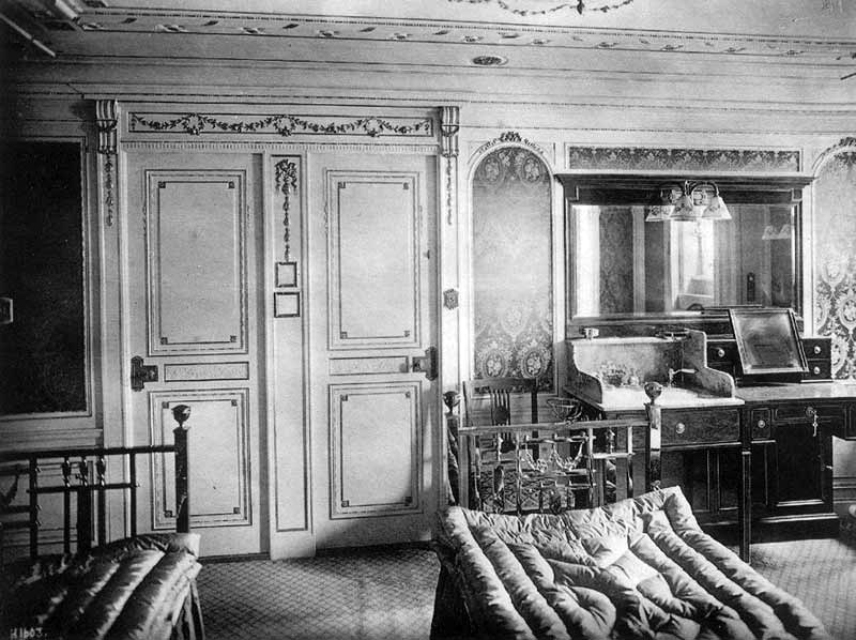
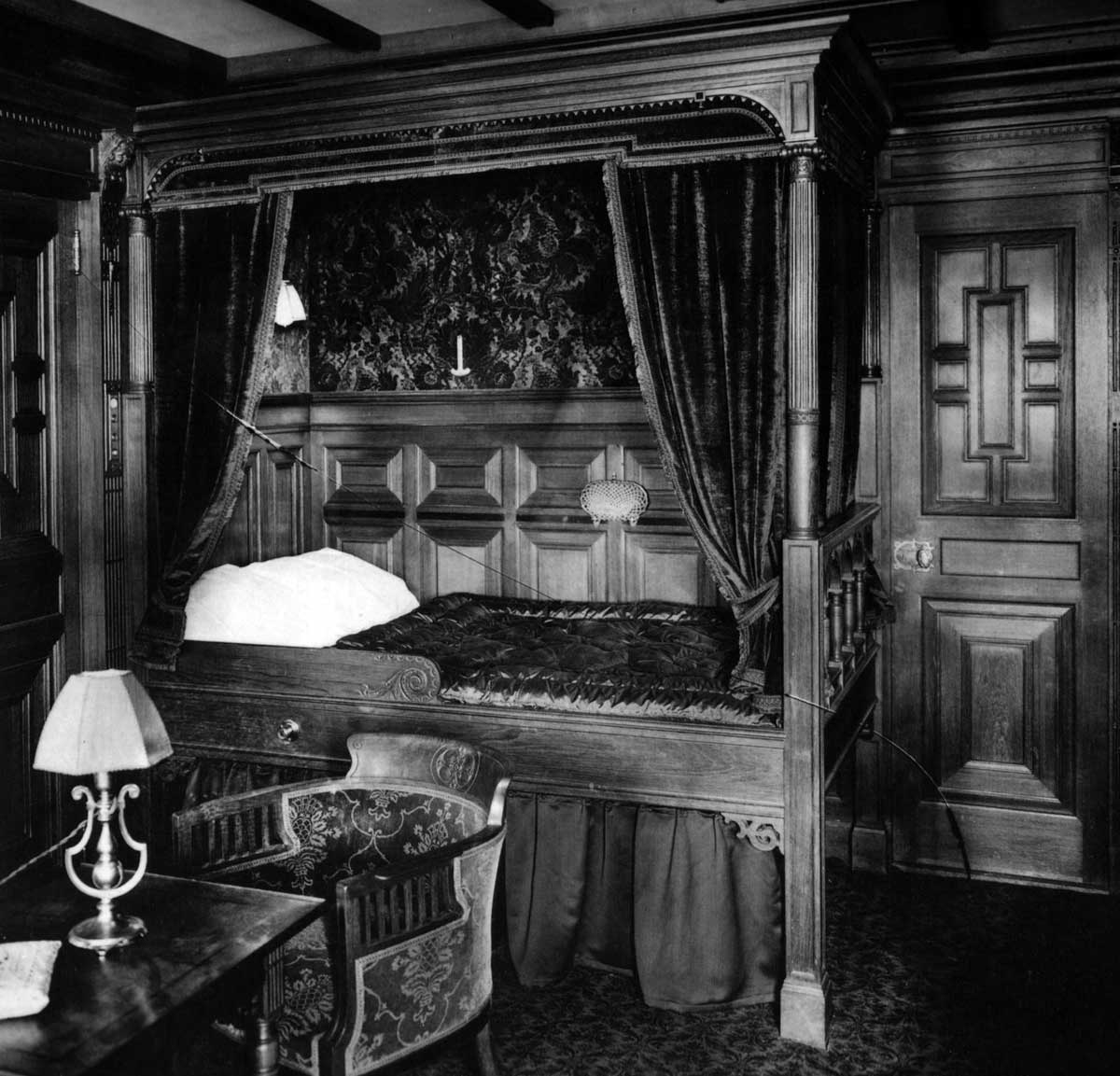
On February 3rd 1912, the Titanic was docked in the Thomson Graving dock.
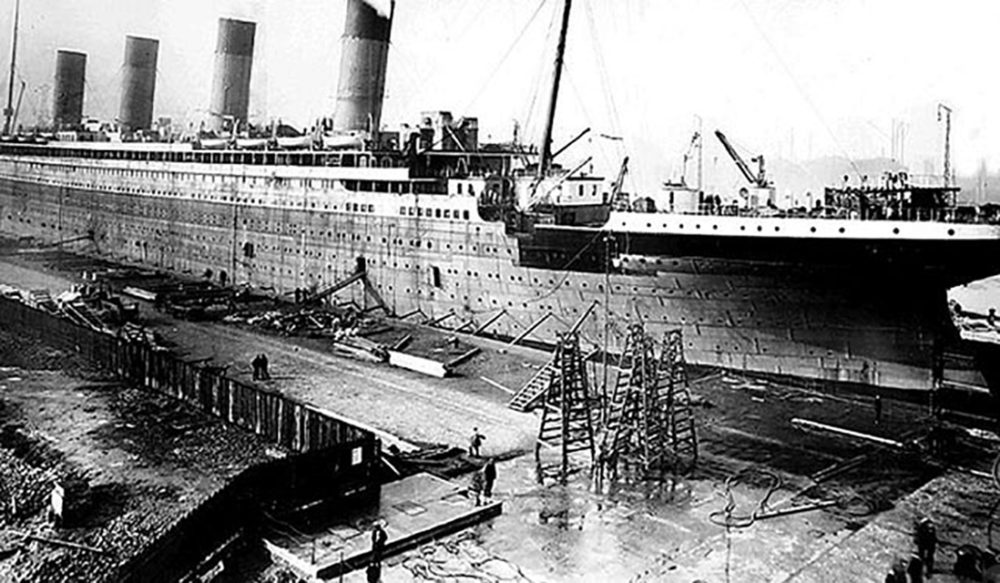

In the dock, they painted the hull of the Titanic, and also installed her 3 propellers, which would transform the power of the engines into a thrust movement forward.
As you can see in the image below, the Titanic had 2 Wing propellers, and 1 central propeller.
The wing propellers had 3 blades and measured 23 1/2 feet in diameter. The central propeller had 4 blades and measured 16 1/2 feet in diameter.
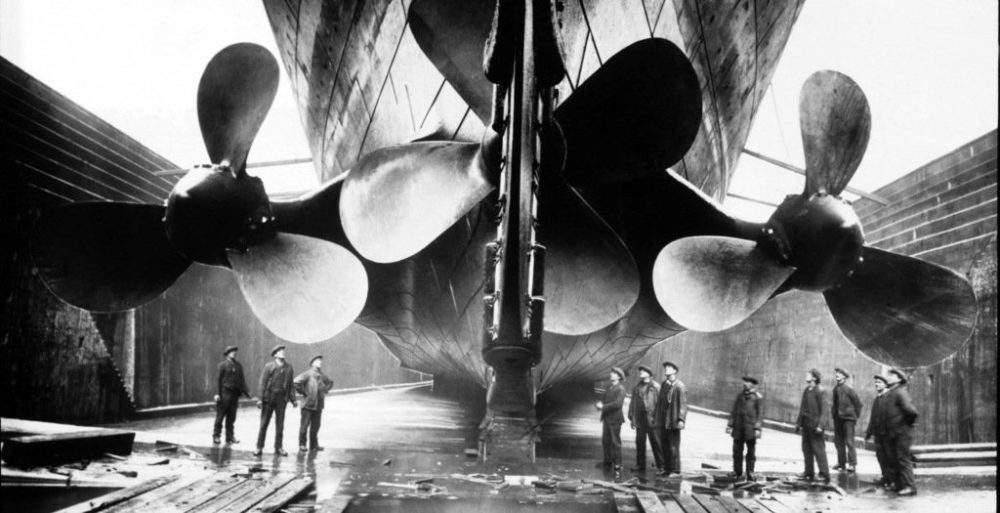
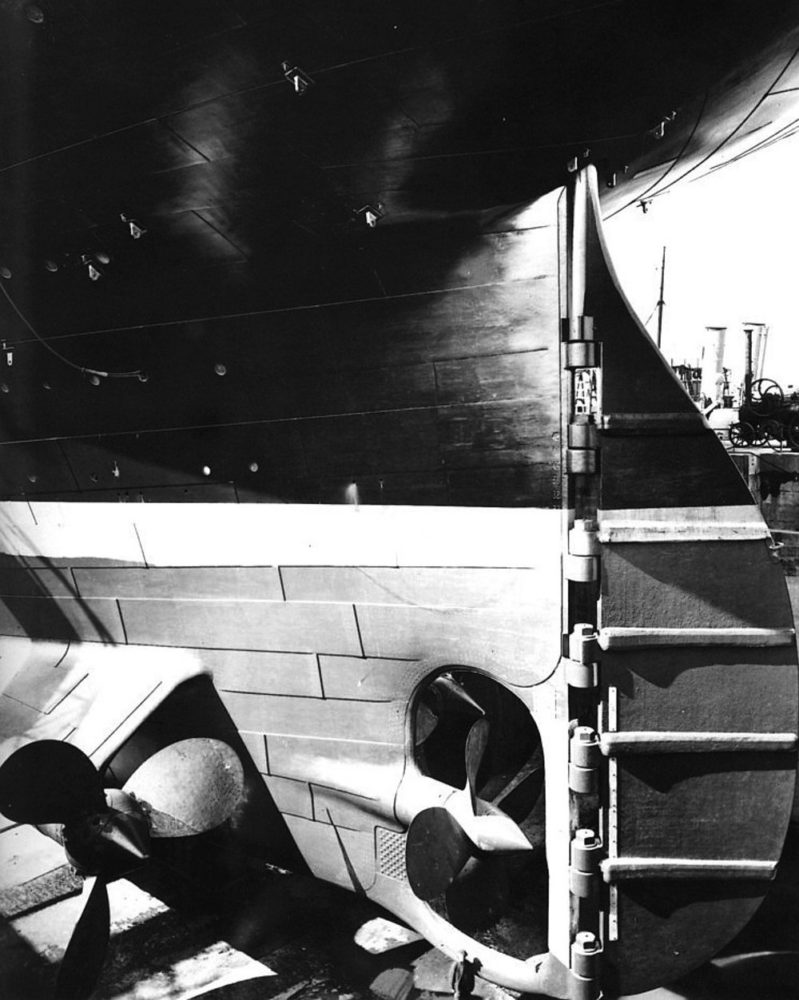
On march 6th 1912, the Titanic had to leave the dock, to make room for the Olympic, who had lost her central propeller during a voyage.
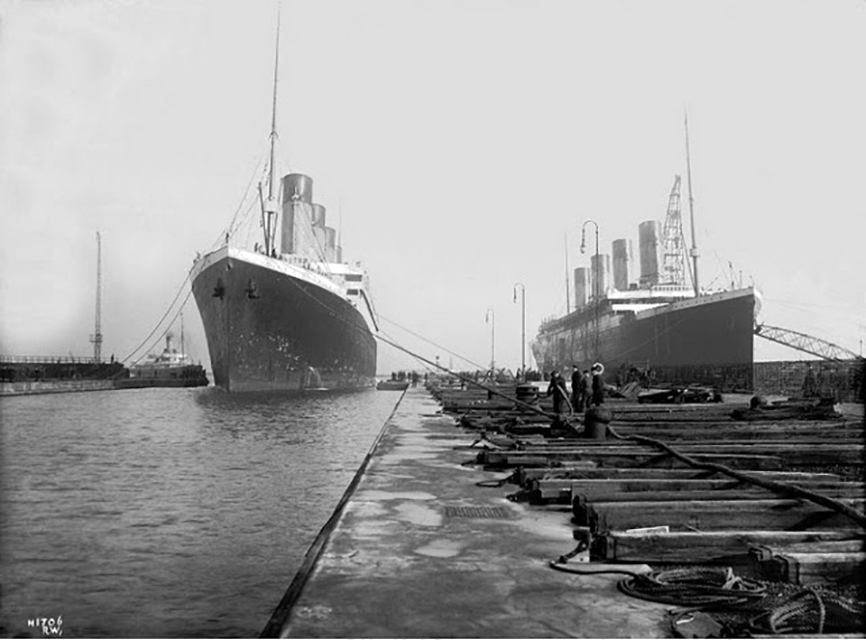
On March 31st 1912, the fitting out of the Titanic was completed. On April 2nd 1912, the Titanic left Belfast and began her sea trials.
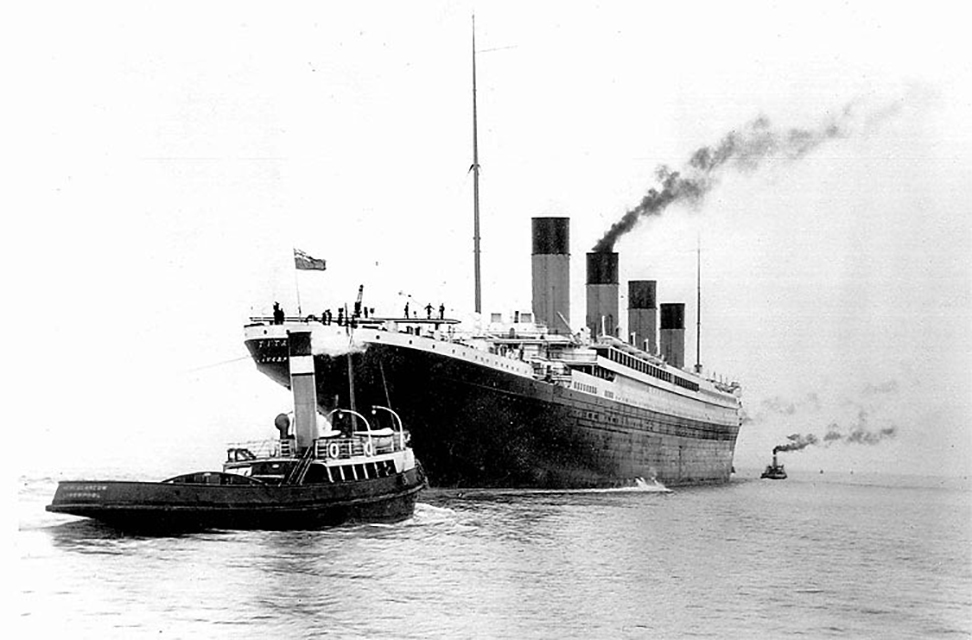
On April 3rd 1912, the Titanic arrived at Southampton, ready for her maiden voyage.
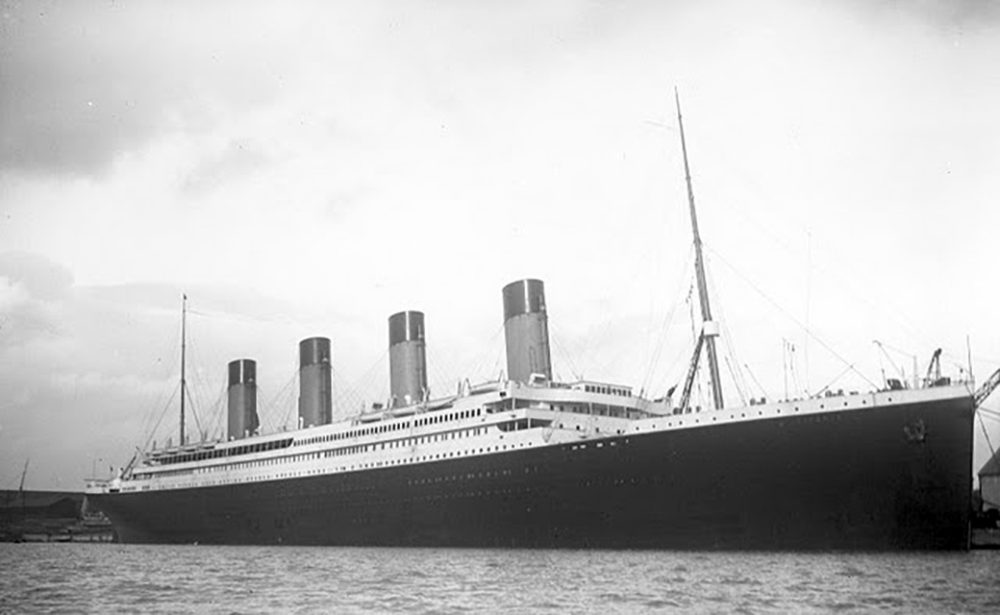
Titanic finally finished after 3 years.
Read more at Titanic’s maiden and final voyage.
I hope you enjoyed this post and especially the images of course 🙂
Feel free to leave a comment, as long as it is civil.
Regards,
J.
